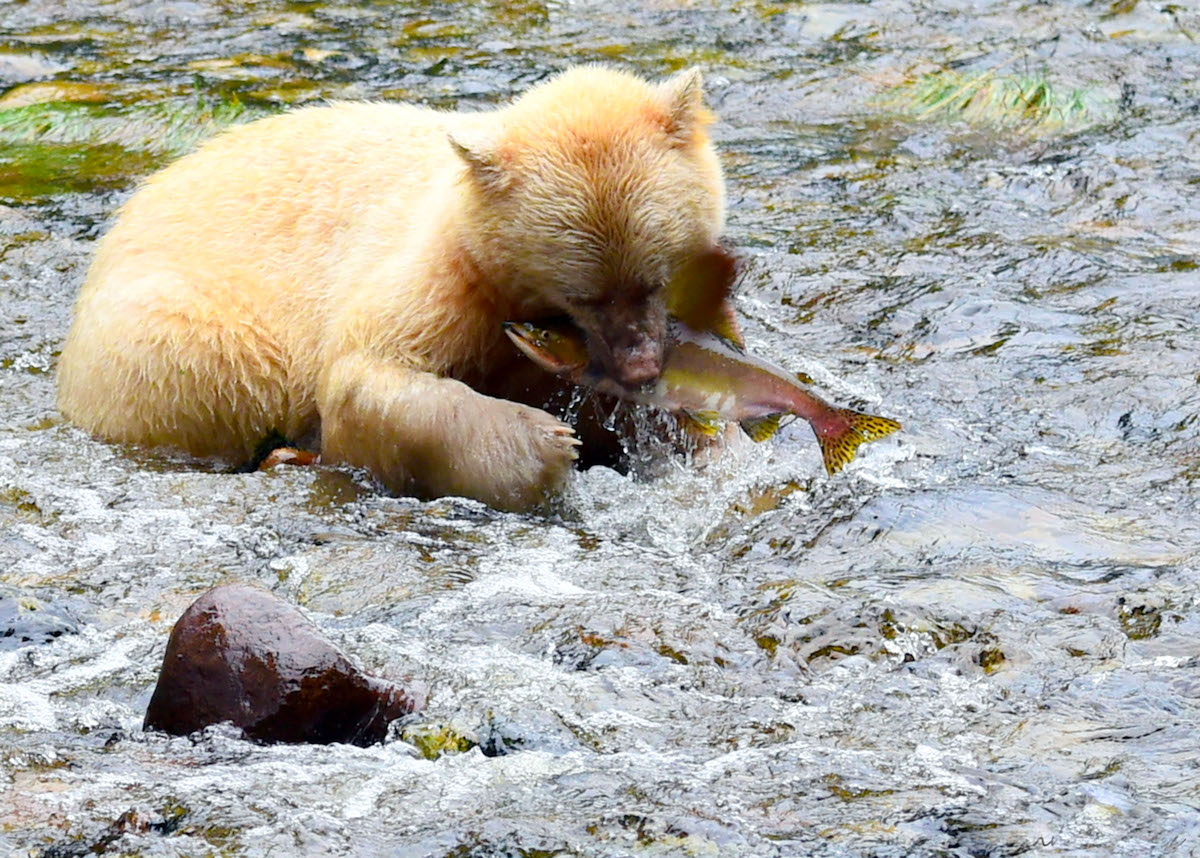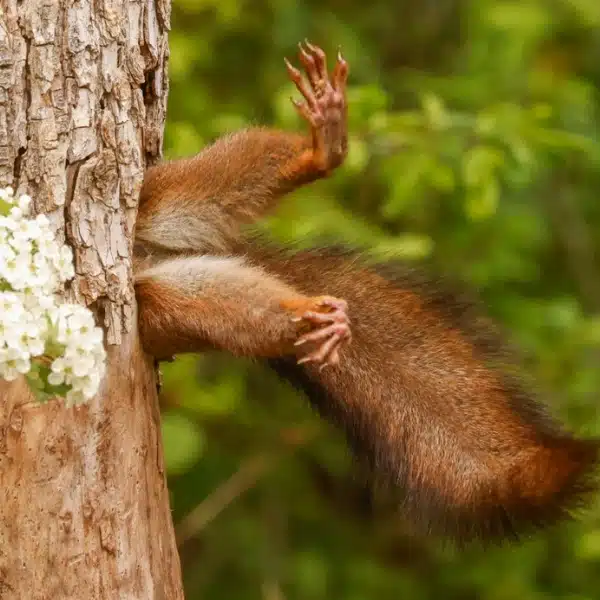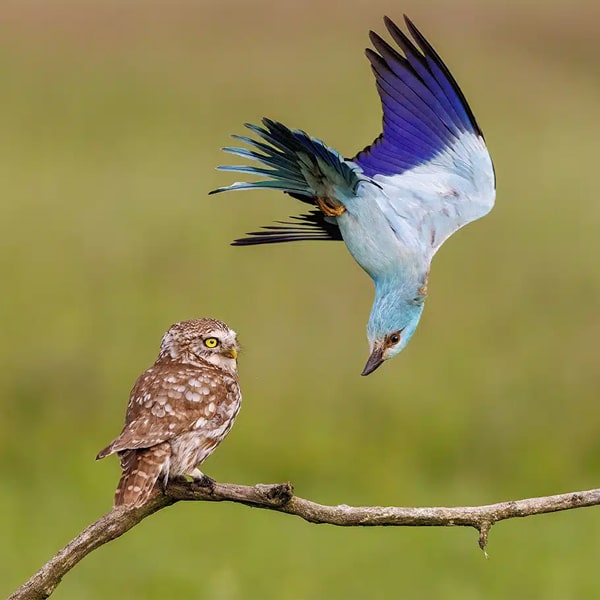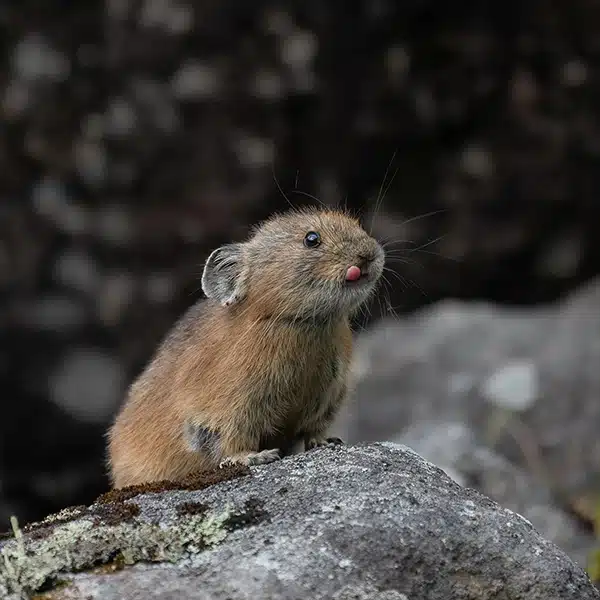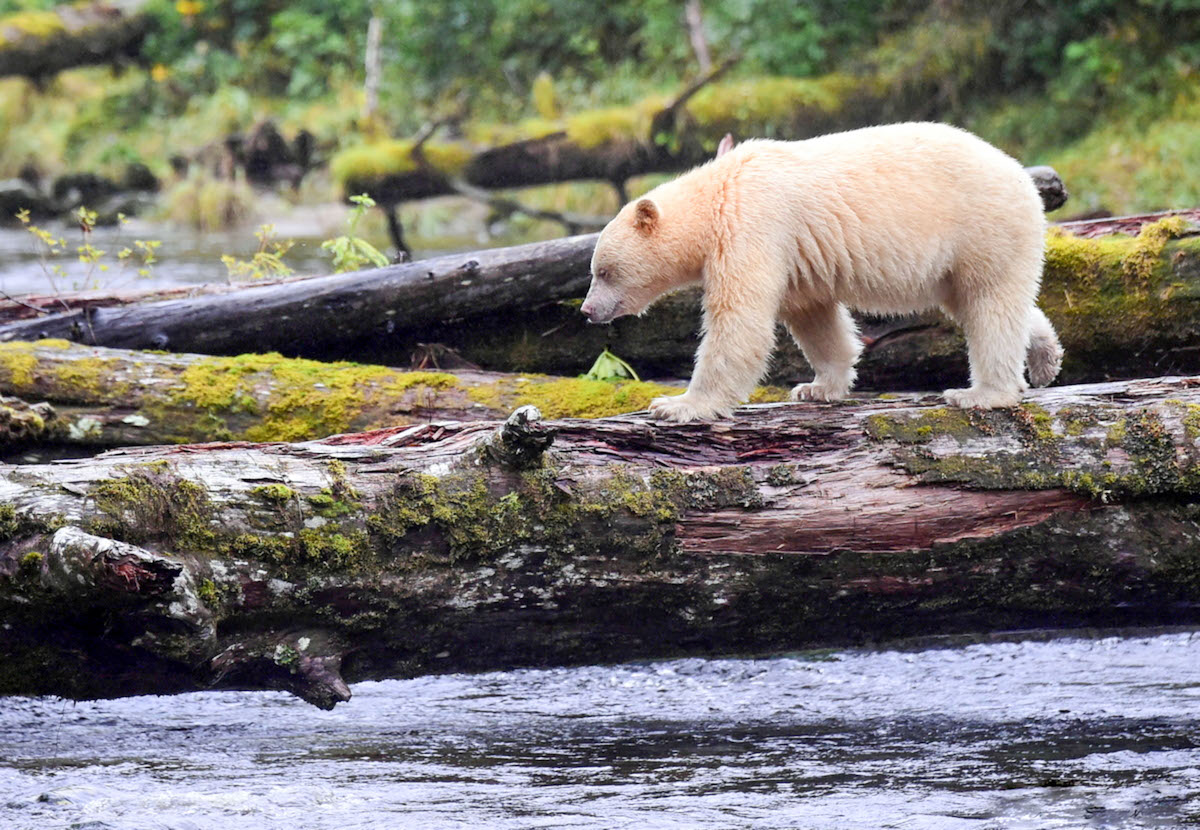
Wildlife photographer Jenny Stevens first heard of the spirit bear—or Kermode bear—in 2013. But it wasn't until several years later that she would have a chance to photograph this rare animal. While most Kermode bears are black, there is a small subset of white bears that are known as spirit bears. Interestingly, this subspecies of the American black bear can only be found in a specific part of British Columbia, Canada. Their white coloration is due to a recessive gene, and on certain islands in British Columbia, they can make up 20% of the Kermode bear population.
Stevens took her photos of a mother and cub during a trip through the Great Bear Rainforest with a group of photographers. After anchoring off Gribbell Island, the group made a long trek to an area where they knew Kermode bears would be hunting for salmon. All Stevens had to do was watch and wait for the special animal to appear.
With fewer than 400 spirit bears living in the coastal area, it was a rare privilege to see them in action. Stevens is careful to remind people that these bears are not albino, as they have pigmented skin and eyes. Their white color is caused by a mutation in a gene that blocks the production of melanin. Two black Kermode bears can reproduce and have a white Kermode bear if both parents have this recessive gene. Interestingly, studies have shown that white bears are more likely to mate with each other, as are black Kermode bears. This phenomenon is known as positive assortative mating.
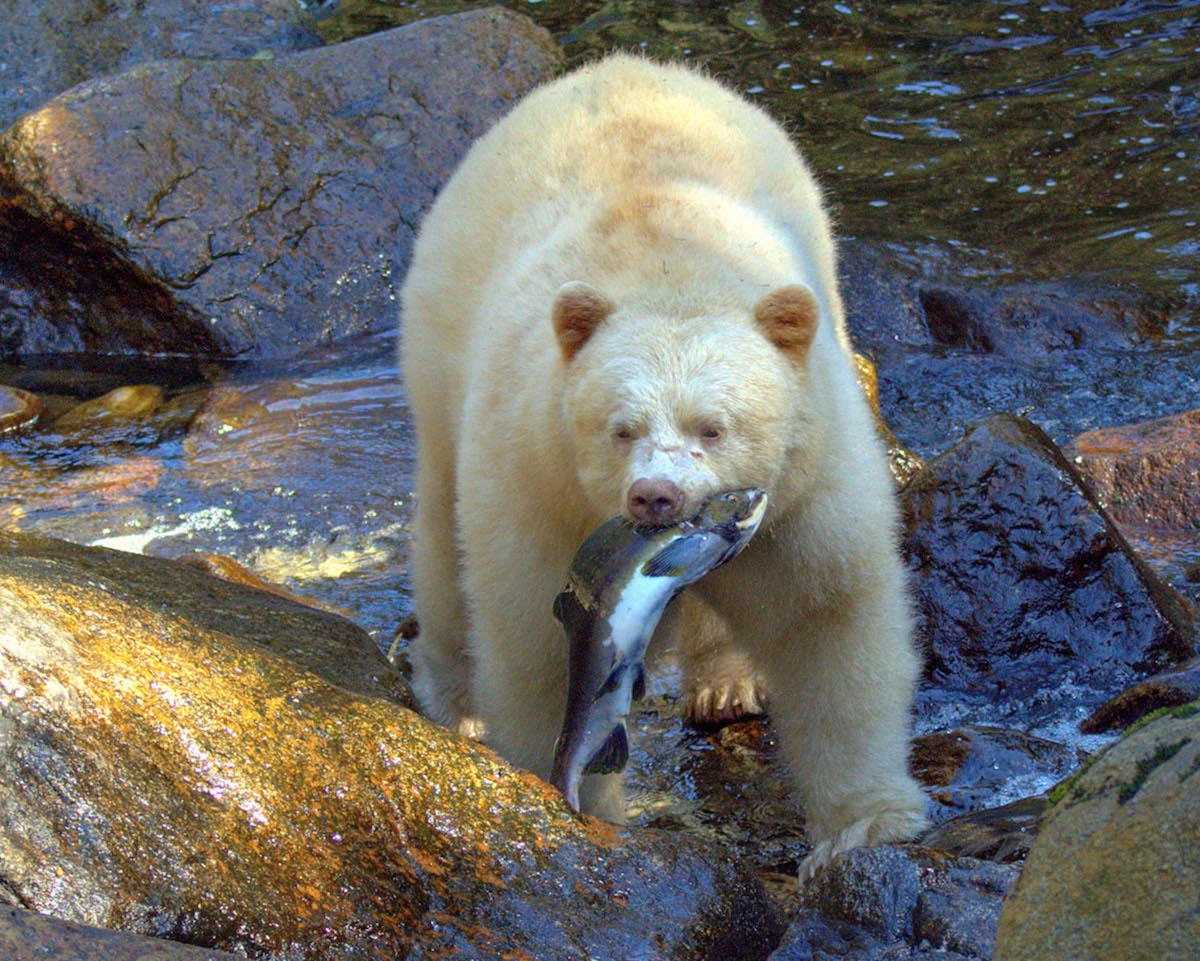
Their appearance gives spirit bears a distinct advantage when it comes to hunting. Studies have shown that spirit bears are 35% more effective in catching salmon when hunting during the day. Apparently, the salmon have an easier time avoiding the big black bears, while the white color of the spirit bear makes them more inconspicuous.
Luckily, the subspecies is not in danger of extinction. As spirit bears, in particular, feature prominently in the oral traditions of Indigenous people, a concerted effort toward their conservation has been made. In 2012, the coastal First Nations banned trophy hunting of all bears in the Great Bear Rainforest. And in 2016, the First Nations won a case against the government that effectively shut down an oil pipeline that would have threatened the bears' habitat.
Still, as salmon populations decline due to climate change and overfishing, there is concern about the Kermode bear. Thankfully, we have Stevens' incredible photographs to remind us that when we fight for the environment, we are also fighting for special animals like the spirit bear.
As Stevens reminds us, “Who knows why there are so few and in such a small area of the world. Mother Nature can be magical.”
The spirit bear (aka Kermode bear) is a rare animal that only lives in a specific area in British Columbia.
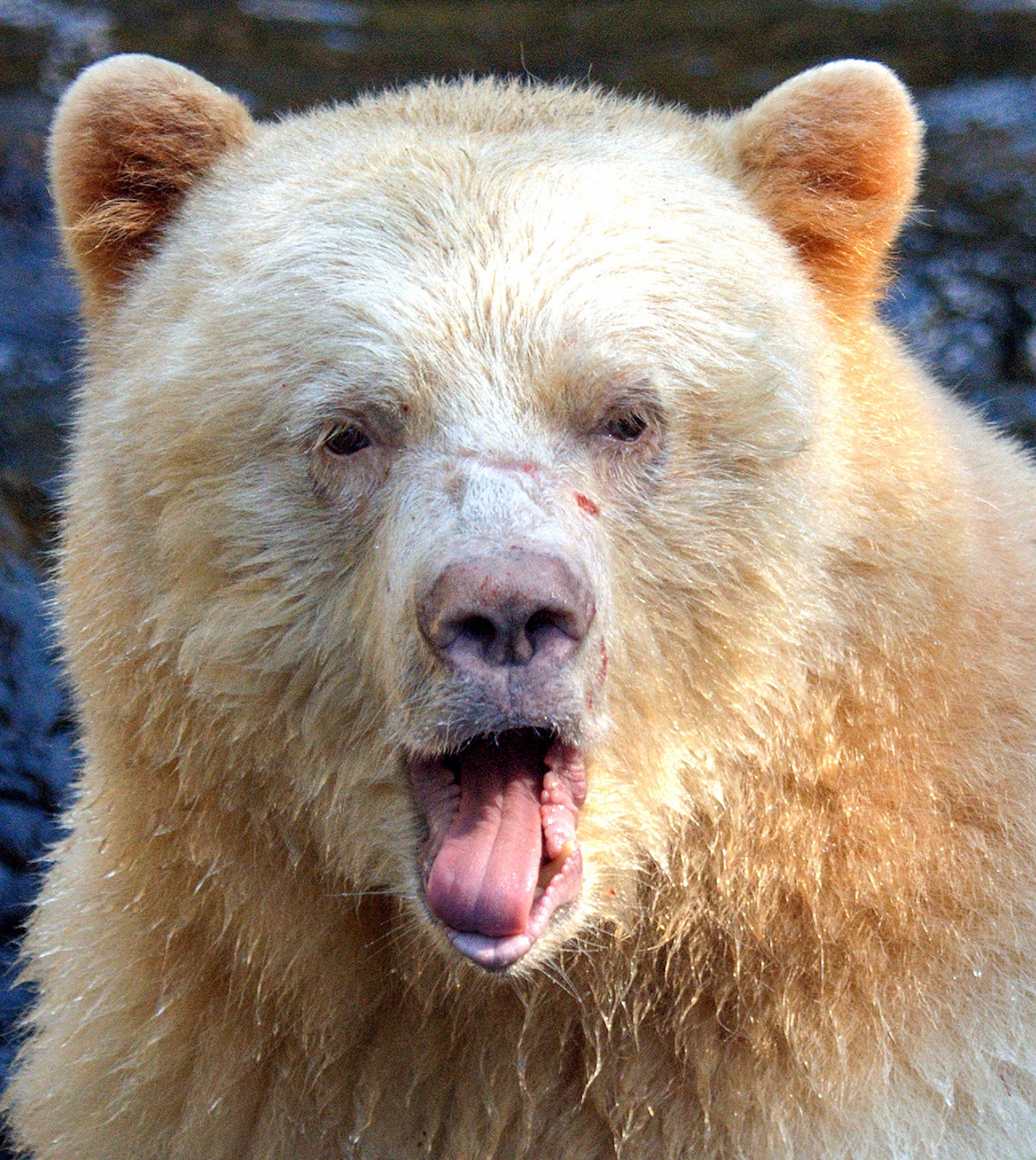
While Kermode bears are usually black, some bears are white due to a genetic mutation.
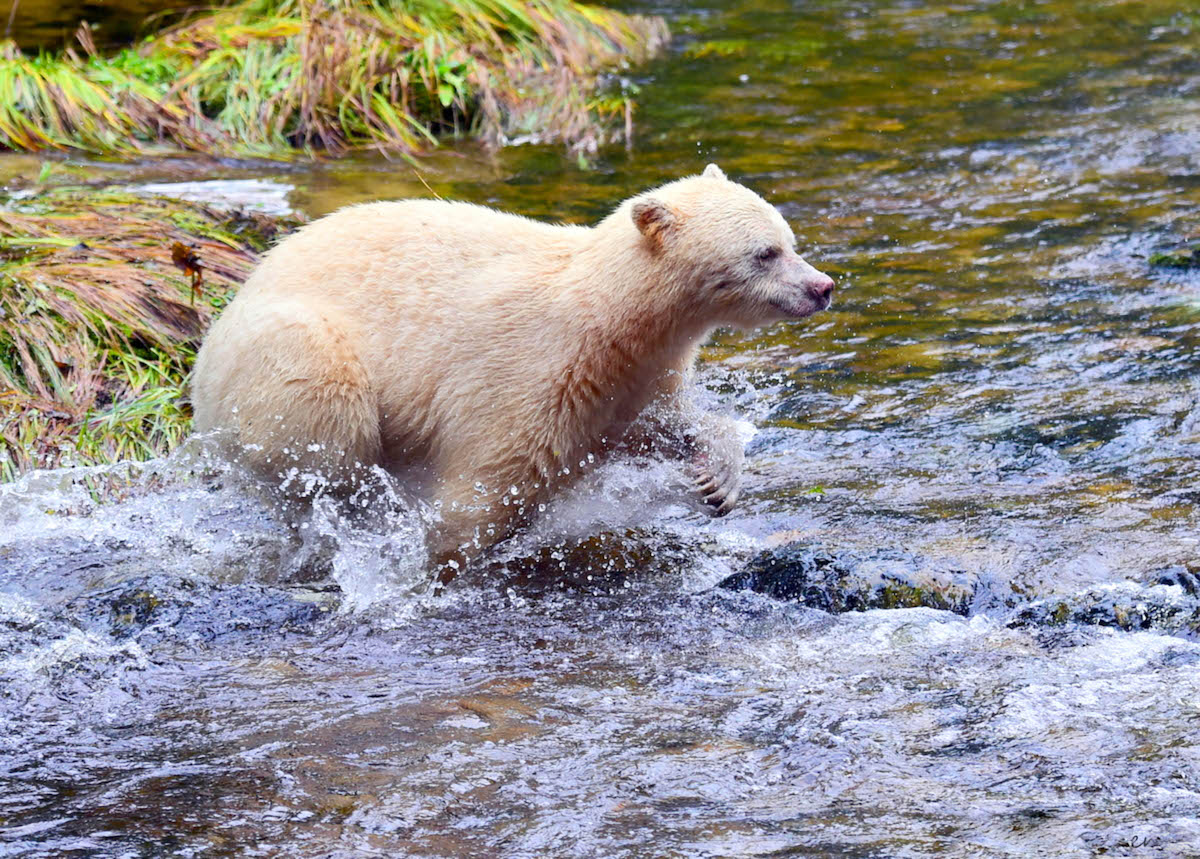
These excellent hunters aren't albino, as their skin and eyes do have pigmentation.
